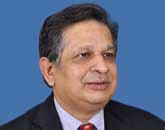- U.S. and World Population Clock - (https://www.census.gov/popclock/)
- Crude Birth Rate India 2011 - (https://data.gov.in/resources/crude-birth-rate-india-2011)
- Which 7 countries hold half the world's population? - (https://www.pewresearch.org/fact-tank/2018/07/11/world-population-day/)
- World Population Clock: 7.7 Billion People (2019) - Worldometers - (https://www.worldometers.info/world-population/)
- Ending preventable maternal, newborn and child deaths - (https://www.unicef.org/india/what-we-do/health)
- India's population passes 1.4 billion ? and that's not a bad thing - (https://www.wusf.org/2023-06-08/indias-population-passes-1-4-billion-and-thats-not-a-bad-thing)
- Birth rate, crude (per 1,000 people) - India - (https://data.worldbank.org/indicator/SP.DYN.CBRT.IN?locations=IN)
- Birth Rate - (https://en.wikipedia.org/wiki/Birth_rate)
- HEALTH AN INTEGRAL COMPONENT OF SOCIAL WELFARE, LEITMOTIF FOR THE GOVERNMENT - (https://pib.gov.in/PressReleasePage.aspx?PRID=1894904 )
- Life expectancy at birth, total (years) - (https://data.worldbank.org/indicator/SP.DYN.LE00.IN?locations=IN )
- Role of National Family Health Survey (NFHS) - (https://pib.gov.in/PressReleasePage.aspx?PRID=1847431)
- India ageing, elderly to make up 20% of population by 2050: UNFPA report - (https://india.unfpa.org/en/news/india-ageing-elderly-make-20-population-2050-unfpa-report )
- Key facts as India surpasses China as the world’s most populous country - (https://www.pewresearch.org/short-reads/2023/02/09/key-facts-as-india-surpasses-china-as-the-worlds-most-populous-country/)
- 2011 census of India - (https://en.wikipedia.org/wiki/2011_census_of_India )
- India Population Density 1950-2024 - (https://www.macrotrends.net/global-metrics/countries/IND/india/population-density)
- The World Fact Book - (ttps://www.cia.gov/library/publications/the-world-factbook/geos/in.html)
- WHO - Indian Statistics - (http://www.who.int/countries/ind/en/)
- Demographics of India - (https://en.wikipedia.org/wiki/Demographics_of_India)
Using the Indian population clock graph, users can visually grasp the dynamics of the country's population changes. The Indian population clock digital display provides an up-to-the-second view of the estimated population in India. As of 2024, the current population of India is over 1.44 billion, making it one of the most populous countries in the world.The current life expectancy for India in 2024 is 70.62 years, a 0.29% increase from 2023.
at |
India's Population Growth
India stands at a pivotal juncture in its history, with a demographic composition that presents a unique opportunity rather than a concern. As of 2021, more than half of India's population is under the age of 29, with over a quarter being 14 years or younger, according to government projections.
INDIAN BIRTH AND DEATH RATES:
| BIRTH RATE | DEATH RATE |
| 26 932 586 births per year | 9 778 073 deaths per year |
| 19.3 births/1,000 population | 7.3 deaths/1,000 population |
| 73,787 births per day | 26,789 deaths per day |
| 3,074 births each hour | 1,116 deaths each hour |
| 51 births each minute | 19 deaths each minute |
| RATE OF INCREASE IN INDIAN POPULATION | |
| Per Year | 16,613,486 |
| Per Month | 13,84,457 |
| Per Day | 57,685 |
| Per Hour | 2,403 |
| Per Second | 1 |
FAQs
1. How many births per day in India?
Approximately 67,385 babies are born every day in India, which is nearly one-sixth of the world's daily births(5✔).
2. What is India's population at present?
As of November 2023, India's population is estimated to be around 1.4 billion(6✔).
3. How many births per 1,000 in India?
India's crude birth rate is around 16.27 births per 1,000 people (as of 2022)(7✔).
4. What is a high birth rate?
Birth rates above 40 per 1,000 people are generally considered high(8✔).
5. What is the infant mortality rate in India?
India's infant mortality rate (IMR) is approximately 35.2 deaths per 1,000 live births as per the fifth round of National Family Health Survey NFHS conducted by MoHFW during the year 2019-21(9✔).
6. What is the life expectancy in India?
Life expectancy at birth in India is around 69.7 years (as of 2023), with variations between genders(10✔).
7. What is India's total fertility rate (TFR) and its implications?
As per the fifth round of National Family Health Survey NFHS conducted by MoHFW during the year 2019-21, the Total Fertility Rate (TFR) has declined to 2.0 children per woman from 2.2 children per woman as per the fourth round of NFHS conducted during the year 2015-16, resulting in the achievement of the replacement level of fertility, which is 2.1 children per woman(11✔).
8. What is the demographic outlook for India's working-age population?
By 2023, approximately 47% of India’s population is in the working-age group, with an average age of 29 years(7✔).
9. What is the projected number of elderly people in India by 2050?
Approximately 330 million Indians are projected to be over 60 by 2050, highlighting an aging population trend(12✔).
10. How many people in India speak English?
India ranks second to the USA in terms of English speakers, with about 125 million proficient in the language relative to its population.
11. How does India's population compare to other countries?
The exact size of the country’s population is not easily known, given that India has not conducted a census since 2011, but it is estimated to have more than 1.4 billion people – greater than the entire population of Europe (744 million) or the Americas (1.04 billion)(13✔).
12. What are some government initiatives to address population growth in India?
The Indian government has implemented various initiatives, including family planning programs and incentives for smaller families, to manage population growth.
13. How does India's population growth impact the country's development?
India's rapid population growth presents challenges such as strained resources and unemployment.
14. Why does India have a high birth rate compared to developed countries?
India's birth rate, while declining, remains higher than developed countries due to factors such as socioeconomic conditions, cultural norms favoring larger families, and disparities in access to family planning services(7✔).
15. What is the population of India compared to other countries?
As of 2011, India’s population of 1.21 billion nearly equals the combined populations of the USA, Indonesia, Brazil, Pakistan, Bangladesh, and Japan(14✔).
16. What is India's population at all times?
Accurately tracking India's population throughout history is challenging, but estimates suggest a continuous increase in population over time.
17. What factors contribute to India's changing demographic trends?
India's demographic trends are influenced by factors such as fertility rates, improving healthcare leading to higher life expectancy, shifts in urbanization patterns, and changes in socio-economic conditions impacting family size preferences.
18. How does India's population density compare globally?
The current population density of India in 2024 is 438.58 people per square kilometer, a 0.92% increase from 2023. With this population density, India falls on the denser side compared to globally. The global average is around 62 people per square kilometer(15✔).
19. What are the regional variations in India's population growth and demographics?
India's population growth and demographic indicators vary significantly across regions. Southern states generally have lower fertility rates and higher literacy rates compared to northern states, influencing overall demographic patterns.
20. What are the key benefits of a demographic dividend?
The key benefits include increased economic growth, higher savings rates, more investment in human capital (education and health), and improved living standards. These changes can lead to sustained economic development and poverty reduction.
 MEDINDIA
MEDINDIA


 Email
Email











In 2020 populatio of india - 1.37 billion